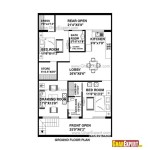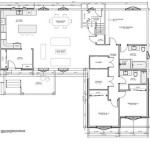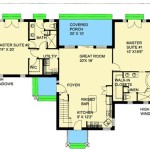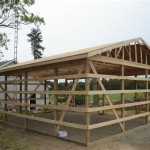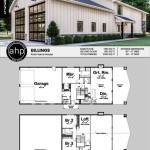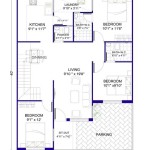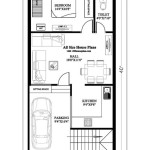Create a House Floor Plan
A house floor plan is a diagram that shows the layout of a home. It includes the location of the rooms, walls, doors, and windows. A floor plan can be used to plan the construction of a new home, to remodel an existing home, or to simply visualize the layout of a space.
Benefits of Creating a House Floor Plan
- Improved Planning: A floor plan helps you visualize the layout of your home and make informed decisions about how to use the space.
- Increased Efficiency: By planning the layout of your home in advance, you can minimize wasted space and improve the flow of traffic.
- Cost Savings: A well-planned floor plan can help you avoid costly mistakes during construction or remodeling.
- Enhanced Safety: A floor plan can help you identify potential safety hazards and make your home safer for your family and guests.
- Increased Resale Value: A well-designed floor plan can increase the resale value of your home.
Steps for Creating a House Floor Plan
1. Determine the Scope of the ProjectBefore you begin creating a floor plan, you need to determine the scope of the project. This includes whether you are planning to build a new home, remodel an existing home, or simply visualize the layout of a space. The scope of the project will dictate the level of detail required in the floor plan.
2. Gather InformationOnce you have determined the scope of the project, you need to gather information about the existing space or the proposed new home. This information includes measurements, photographs, and any existing plans or drawings. You may also want to consider the needs of your family and your lifestyle when gathering information.
3. Create a Rough SketchThe next step is to create a rough sketch of the floor plan. This sketch does not need to be to scale, but it should include the basic layout of the rooms, walls, doors, and windows. The rough sketch will help you visualize the layout of the space and identify any potential problems.
4. Draw the Floor Plan to ScaleOnce you are satisfied with the rough sketch, you can begin drawing the floor plan to scale. This means that the drawing will be an accurate representation of the size and shape of the space. You can use a ruler or measuring tape to measure the walls and rooms, and then transfer those measurements to the drawing. You can also use a computer-aided design (CAD) program to create a floor plan to scale.
5. Add DetailsOnce the floor plan is to scale, you can begin adding details. This includes the location of fixtures, appliances, furniture, and other elements. You can also add notes to the floor plan to explain the function of each space or to indicate any special requirements.
6. Review and ReviseOnce the floor plan is complete, take some time to review it carefully. Identify any areas that could be improved or any changes that need to be made. You may also want to get feedback from others on the floor plan. Once you are satisfied with the floor plan, you can finalize it.
Tips for Creating a House Floor Plan
- Use a consistent scale throughout the floor plan.
- Include all of the relevant information on the floor plan, such as the location of fixtures, appliances, furniture, and other elements.
- Add notes to the floor plan to explain the function of each space or to indicate any special requirements.
- Get feedback from others on the floor plan before finalizing it.
- Keep the floor plan up to date as the project progresses.

Easy Home Building Floor Plan Cad Pro

Floor Plan Creator And Designer Free Easy App

Floor Plan Creator Powerful And Design App Roomsketcher Create Simple Plans Planner

From Sketch To Reality How Design A House You Ll Love

Floor Plan Creator And Designer Free Easy App

20 Best Floor Plan Apps To Create Your Plans Foyr

How Much Do 3d House Plans Cost Faqs Answered Cedreo

Draw Floor Plans With The Roomsketcher App

Small House Plans Popular Designs Layouts

Where You Can Buy House Plans Live Home 3d

